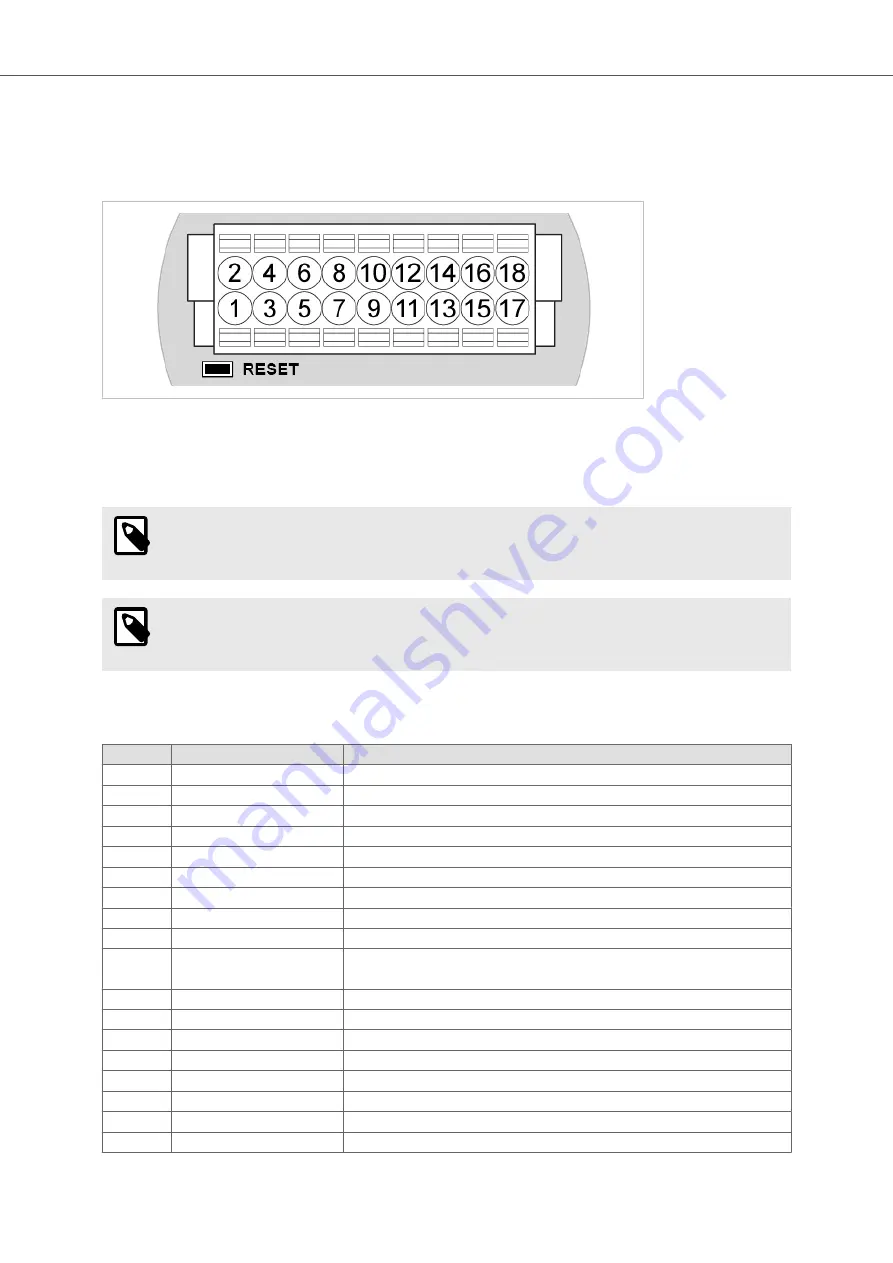
4.2. Connector
The 18-pin connector is common for several models of the Anybus Wireless Bolt. Some pins may have a different
function depending on model. Unused pins should not be connected.
Figure 2. 18-Pin connector
The location of the RESET button can be used as a reference for the pin numbering when the connector is
attached to the Bolt Serial. Pin 1 will be the pin closest to the RESET button.
NOTE
The Ethernet interface is intended for configuration purposes only. Bolt Serial is not designed for
permanent Ethernet communication.
NOTE
A and B marking differs between different devices, in this product A is TX-/RX- or D- and B is TX+/RX+
or D+.
For information about the correct connection type and termination, refer to
RS232/RS485 Electrical Connection
.
Pin
Name
Description
1
VIN
Power + (9–30 V)
2
GND
Power Ground
3
DI
Digital input + (9–30 V)
4
DI_GND
Digital input ground
5
Ethernet r (white/orange)
6
ETN_RD-
Ethernet receive - (orange)
7
ETN_TD-
Ethernet transmit - (green)
8
Ethernet tr (white/green)
9
RS485_B
RS-485 B Line
10
FE/Shield
Ethernet: Functional Earth
Serial and CAN: Functional Earth and Shield
11
RS232_TXD
RS-232 Transmit
12
RS485_A/RS232_RXD
RS-485 A Line / RS-232 Receive
13
RS232_RTS
RS-232 Request To Send (Not used for Wireless Bolt Serial.)
14
RS232_CTS
RS-232 Clear To Send (Not used for Wireless Bolt Serial.)
15
ISO_5V
Isolated 5 V for serial interface
16
RS232_GND/RS485_GND
Isolated Ground for Serial interface
17
CAN_L
CAN Low (Not used for Wireless Bolt Serial.)
18
CAN_H
CAN High (Not used for Wireless Bolt Serial.)
Connector
Anybus
®
Wireless Bolt Serial
™
SCM-1202-143 2.0
Page 7 of 60












































